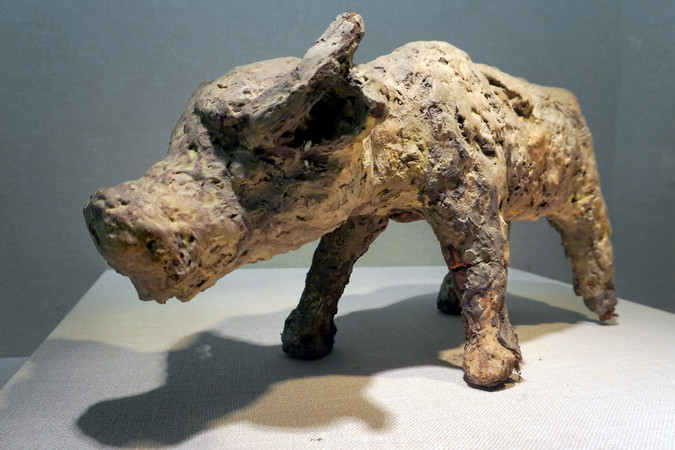NASA's Voyager is in hostile territory. It's 'dodging bullets.'
NASA's Voyager craft have 关键字1ventured where no other human machines have ever gone — the space between the stars. But that comes with a cost.
At some 15 and 12 billion miles away, Voyager 1 and 2 are beyond the protective bubble of the sun, called the heliosphere. Out in this realm of interstellar space, the nearly 50-year-old probes have a higher probability of damage from hostile, high-speed particles, called galactic cosmic rays, owing to a higher number of particles zooming by every second.
"We are dodging bullets out there," Alan Cummings, a cosmic-ray physicist at Caltech — the research university that manages NASA's Jet Propulsion Laboratory — told Mashable. Cummings began working on the Voyager mission 51 years ago.
You May Also Like
SEE ALSO: NASA spacecraft keeps on going faster and faster and faster
But direct hits are inevitable. In 2010, while on the edge of our solar system's heliosphere, Voyager 2 unexpectedly began sending gibberish back to Earth. Cummings suspects that a passing galactic cosmic ray tripped part of a computer's memory — though NASA was eventually able to rectify the problem. Most recently, Voyager 1 failed to send back readable data for five months, a particularly worrying incident that may also have been triggered by a cosmic ray. Something corrupted a computer chip.
"We don't know everything," Cummings explained, referencing the difficulty in perfectly diagnosing such profoundly distant mishaps. "But I do think galactic cosmic rays are the guilty party here for most of these problems."
"We are dodging bullets out there."
Galactic cosmic rays are merciless because they're extremely tiny, charged particles, traveling at incredible speeds — nearly the speed of light. "The galaxy is permeated with galactic cosmic rays," Cummings marveled. Astronomers think violently exploding stars — supernovae — are responsible for creating many of these particles, as the colossal shock wave from the event accelerates the particles. Stripped of their outer shells, they hurtle through space as just the nuclei of atoms.
The heavier ones, like iron atoms transformed into galactic cosmic rays, can cause more damage than the lighter, more abundant ones. (It's somewhat like getting hit by a bowling ball at 50 mph, versus a golf ball.) They can zip right through a computer chip — altering its code — or even become lodged there, where they can pack an even bigger punch by doing permanent damage.
 A graphic showing Voyager 1 and 2 having traveled beyond the sun's partially protective heliosphere, and into interstellar space. Credit: NASA / JPL-Caltech
A graphic showing Voyager 1 and 2 having traveled beyond the sun's partially protective heliosphere, and into interstellar space. Credit: NASA / JPL-Caltech  Engineers installing a golden record — containing music, sounds, and imagery from Earth — to the side of Voyager 1. Credit: NASA / JPL-Caltech
Engineers installing a golden record — containing music, sounds, and imagery from Earth — to the side of Voyager 1. Credit: NASA / JPL-Caltech Of course, NASA spacecraft like the Voyagers are equipped with radiation-resistant parts and shielding, including wrapping around critical cables. These layers can keep out some particles — but not all. "You can protect yourself to some extent, but a high-enough-energy particle will get through your defenses," Cummings explained. Early in the Voyager mission, the space agency's engineers were worried about the craft passing by Jupiter, a planet that produces intense radiation. A person hypothetically riding aboard Voyager would have gotten hit with a radiation dose 1,000 times the lethal level. "That was pretty hostile," Cummings recalled. He said a few detectors on his galactic-ray measuring instrument (the Cosmic Ray Subsystem)were wounded, but overall, both the instrument and entire spacecraft survived to produce new scientific results, including vibrant, unprecedented imagery.
Yet out in the deeper cosmos, the Voyagers face a different threat. Around the gas giant Jupiter, the craft were sprayed with charged particles, but they were lower energy. Now in interstellar space, the craft are more often exposed to those high-energy particles. Any place in space — whether in our solar system or beyond — can meet the threat of a harmful galactic cosmic ray. But the odds are boosted in the interstellar realm.
"Explorers run into problems when they enter into new territory."
When might another such hit come? "It's just a random chance out there right now," Cummings said.
Related Stories
- The U.S. is exploring a railroad for the moon. It has a good reason.
- Alien planets might teem with purple — yes, purple — life
- The best telescopes for gazing at stars and solar eclipses in 2024
- NASA shows how Mars helicopter did the impossible, and then crashed
- If a scary asteroid will actually strike Earth, here's how you'll know
 The Voyager team celebrates after restoring some communication to Voyager 1 on April 20, 2024. Credit: NASA / JPL-Caltech
The Voyager team celebrates after restoring some communication to Voyager 1 on April 20, 2024. Credit: NASA / JPL-Caltech Billions of miles away, on Earth, in sunny Pasadena, California, however, the craft have a guardian. Or, a legion of guardians. NASA engineers have for decades devised ways to keep the aging, radiation-pummeled craft alive. They communicate with vintage computers aboard the nearly half-century old probes. Talking to an interstellar craft isn't like sending a text: It takes almost two days to transmit and then receive a message. Most recently, in April, NASA engineers squared off with a permanently-damaged computer chip on Voyager 1. By beaming messages to the craft, over 15 billion miles away, they successfully stored the defunct chip's unique code in other chips, as "no single location is large enough to hold the section of code in its entirety," the agency explained. The craft is once again communicating about its health, but not yet returning science data.
"You have to praise the engineers," Cummings emphasized.
They've certainly been busy. And in hostile space, with high-speed particles ceaselessly whizzing by, they'll likely continue to be. The craft are running low on nuclear fuel, but could — if undamaged — beam back unprecedented readings from uncharted space through the mid-2030s.
"Explorers run into problems when they enter into new territory,"Cummings said. "Lewis and Clark didn't have an easy time, either."
(责任编辑:你和我的倾城时光)
 宇宙巡航机1代全地图怎么通关
宇宙巡航机1代全地图怎么通关 这5种癌症术后较易复发和转移,想要预防,做好3件事是关键!
这5种癌症术后较易复发和转移,想要预防,做好3件事是关键! 嘉兴市委副书记、市长毛宏芳一行调研联运环境垃圾分类项目
嘉兴市委副书记、市长毛宏芳一行调研联运环境垃圾分类项目 现场视频:中美经贸磋商机制首次会议将继续进行
现场视频:中美经贸磋商机制首次会议将继续进行三层别墅装修如何设计 三层别墅装修楼梯设计
- Best Nintendo Switch 2 deals: Save on cases, accessories, and more
- 《采用国际标准管理办法》6月起施行
- เช้านี้ค่าฝุ่นในประเทศอยู่ในเกณฑ์มาตรฐาน อยู่ในระดับดีมาก
- Uruguay vs. Venezuela 2025 livestream: Watch World Cup Qualifiers for free
- 户外活动时被虫子叮咬怎么办?专家支招:记住这“三要”!
- 山西金杏花酒业有限公司
- The Take It Down Act presents major enforcement problems
- The Weird World of AI Hallucinations
-
Make Chrome Run Faster and Keep RAM Usage Under Control
Chrome has come a long way since its first beta was released in 2008. Currently sitting at the top o ...[详细]
-
癌症晚期药无可用、治无可治时,可以选择安乐死?现实其实很残酷
 有时,去治愈;常常,去帮助;总是,去安慰!这是加拿大著名医生特鲁多的墓志铭,可能很多人都理解不了这句话的含义。但对于在肿瘤科工作的医护人员而言,他们每天都在这样的处境中度过,在患者有希望治愈时,拼尽全
...[详细]
有时,去治愈;常常,去帮助;总是,去安慰!这是加拿大著名医生特鲁多的墓志铭,可能很多人都理解不了这句话的含义。但对于在肿瘤科工作的医护人员而言,他们每天都在这样的处境中度过,在患者有希望治愈时,拼尽全
...[详细]
-
2019年3月26日,浙江省商务厅副厅长徐高春一行来到浙江联运环境工程股份有限公司进行实地考察调研。浙江省商务厅副厅长徐高春,杭州市商务局副局长朱铮及省商务厅流通发展处、市商务局特种行业处、省分类办等 ...[详细]
-
 登革热指的是一种由于感染上登革热病毒,从而引起的急性虫媒传染性疾病,一旦患病,患者会出现突然的高烧,以及眼球疼痛、头痛、关节疼痛、肌肉痛,以及呕吐、恶心、乏力、腹泻、皮疹、出血等症状。如果没有及早治疗
...[详细]
登革热指的是一种由于感染上登革热病毒,从而引起的急性虫媒传染性疾病,一旦患病,患者会出现突然的高烧,以及眼球疼痛、头痛、关节疼痛、肌肉痛,以及呕吐、恶心、乏力、腹泻、皮疹、出血等症状。如果没有及早治疗
...[详细]
-
 杖剑传说在106级之后开启龙之国5,同时开始4阶转职,其中术士4阶转职拥有6个技能6个秘法,许多玩家不知道这些技能都是什么,下面就为大家带来杖剑传说中4转术士技能的介绍说明,一起来看看吧!杖剑传说4转
...[详细]
杖剑传说在106级之后开启龙之国5,同时开始4阶转职,其中术士4阶转职拥有6个技能6个秘法,许多玩家不知道这些技能都是什么,下面就为大家带来杖剑传说中4转术士技能的介绍说明,一起来看看吧!杖剑传说4转
...[详细]
-
 约一周前,第三轮第四批中央生态环境保护督察全面启动,组建8个中央生态环境保护督察组,分别对山西、内蒙古、山东、陕西、宁夏5省区)开展督察,统筹开展黄河流域督察和省域督察,同时对中国华能集团有限公司、中
...[详细]
约一周前,第三轮第四批中央生态环境保护督察全面启动,组建8个中央生态环境保护督察组,分别对山西、内蒙古、山东、陕西、宁夏5省区)开展督察,统筹开展黄河流域督察和省域督察,同时对中国华能集团有限公司、中
...[详细]
-
《InvertedAngel》PC版下载 Steam正版分流下载
 《PackItOut》是一款“可爱未来悬疑”风格的文字互动冒险游戏。故事开始于一位陌生女生突然出现在你面前,自称是你的女朋友。她行为怪异,似乎带有轻微病娇Menhera)倾向,同时又了解你太多,绝非普
...[详细]
《PackItOut》是一款“可爱未来悬疑”风格的文字互动冒险游戏。故事开始于一位陌生女生突然出现在你面前,自称是你的女朋友。她行为怪异,似乎带有轻微病娇Menhera)倾向,同时又了解你太多,绝非普
...[详细]
-
One Big Beautiful Bill Act to ban states from regulating AI
 Buried in the Republican budget bill is a proposal that will radically change how artificial intelli
...[详细]
Buried in the Republican budget bill is a proposal that will radically change how artificial intelli
...[详细]
-
 央视网消息:这两天,华北多地出现同期少见的强降雨。8月26日,京津冀及山东、江苏北部等地出现暴雨到大暴雨。山东东营、滨州、潍坊及河北沧州等局地特大暴雨,最大日降雨量超过300毫米。本轮降雨基本在8月2
...[详细]
央视网消息:这两天,华北多地出现同期少见的强降雨。8月26日,京津冀及山东、江苏北部等地出现暴雨到大暴雨。山东东营、滨州、潍坊及河北沧州等局地特大暴雨,最大日降雨量超过300毫米。本轮降雨基本在8月2
...[详细]
-
 我的世界珍妮slipperyt网站(点第一个)是一款好看的动画,因此很多玩家想知道我的世界珍妮slipperyt18+苦力怕在哪儿看?游戏宝小编为您带来我的世界珍妮slipperyt在线观看全集地址。
...[详细]
我的世界珍妮slipperyt网站(点第一个)是一款好看的动画,因此很多玩家想知道我的世界珍妮slipperyt18+苦力怕在哪儿看?游戏宝小编为您带来我的世界珍妮slipperyt在线观看全集地址。
...[详细]

 这5种癌症术后较易复发和转移,想要预防,做好3件事是关键!
这5种癌症术后较易复发和转移,想要预防,做好3件事是关键! 现场视频:中美经贸磋商机制首次会议将继续进行
现场视频:中美经贸磋商机制首次会议将继续进行

